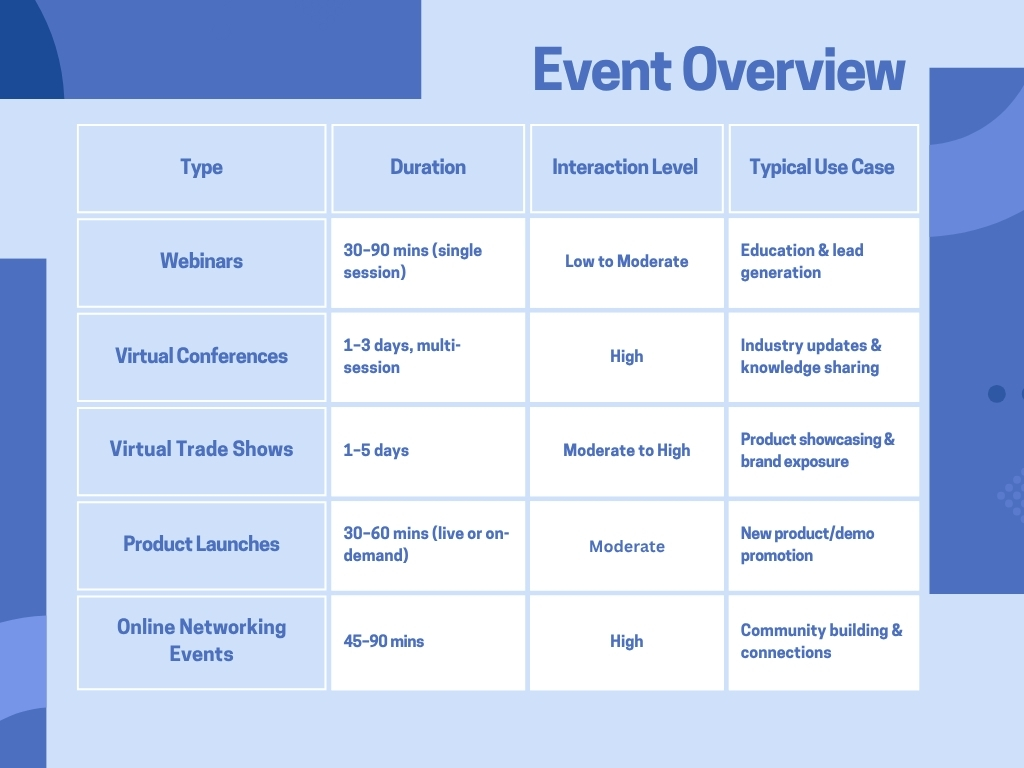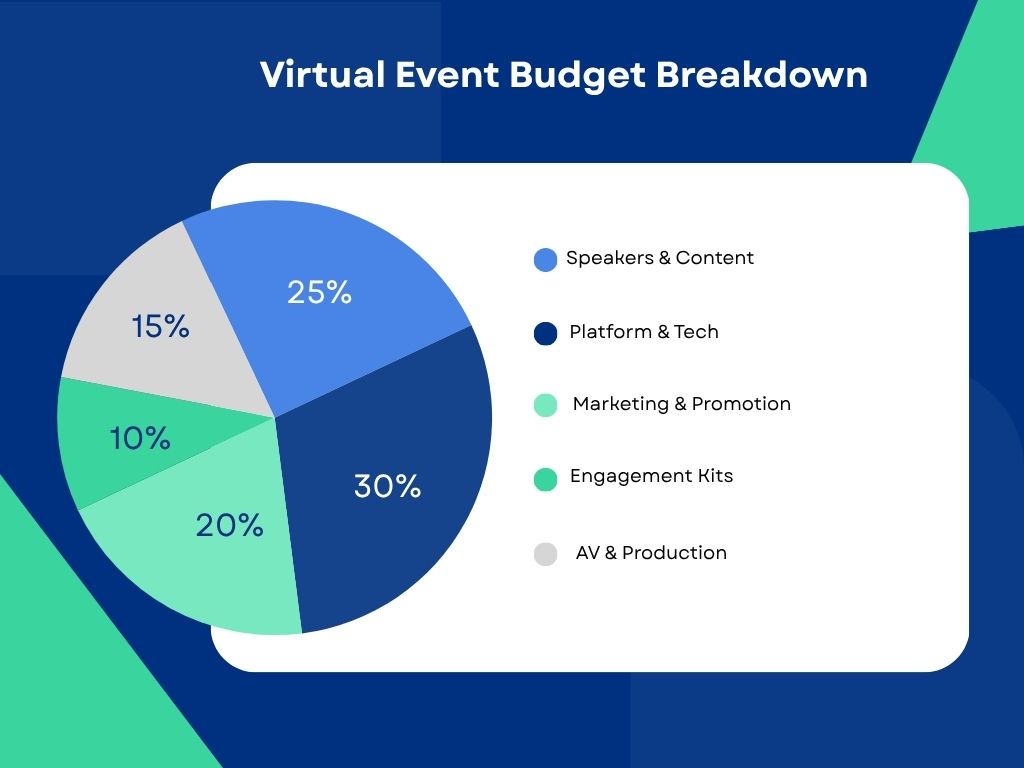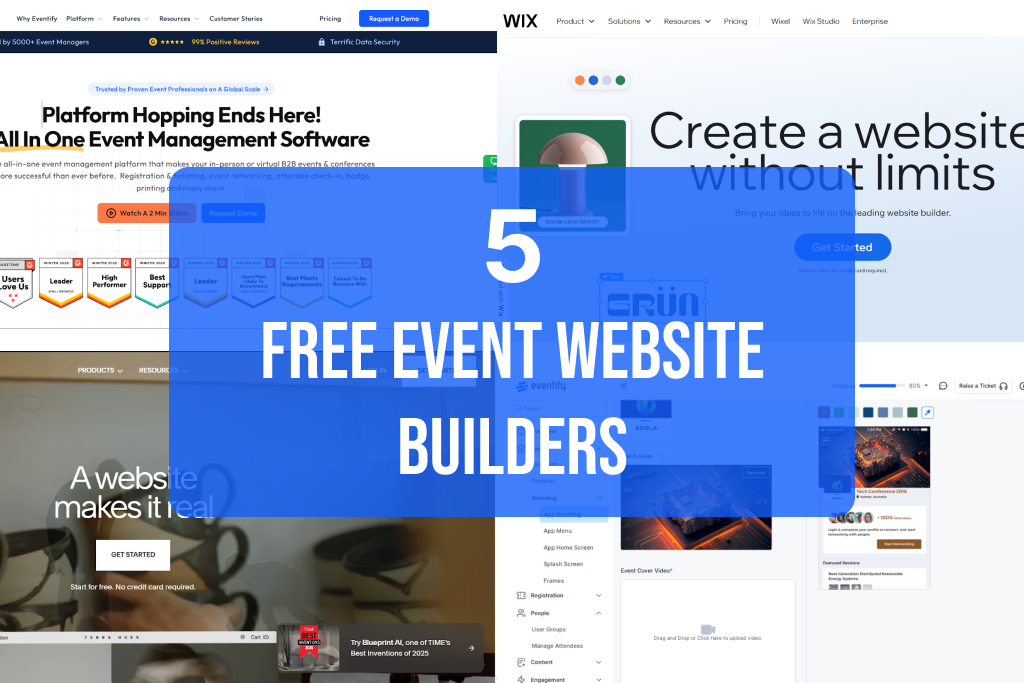Are you struggling to make virtual events feel as engaging and impactful as in-person ones? You’re not alone. With the rapid shift to digital events post-pandemic, delivering the right interactive and immersive experience for the audience is more challenging than ever.
This guide to virtual events in 2026 provides you with the tools, formats, and strategies to design and deliver memorable and engaging virtual events.
Let’s go through what is working now and how you can make your next virtual event a success.
Key Takeaways
- In 2026, virtual events are the go-to format because of their scalability, flexibility, and low cost.
- Features like AR/VR, real-time analytics, and AI-powered matchmaking are redefining how people look at virtual events.
- Gamification, breakout rooms, and interactive tools are key to boosting attendee engagement and retention.
- Platforms like Eventify streamline virtual event planning with built-in tools for engagement, analytics, and seamless delivery.
.jpg)
The Evolution of Virtual Events
Then vs. Now
- Pre-pandemic: Webinars and online meetings were practical but often dull.
- Post-pandemic: There was explosive growth in event tech, from AI-powered matchmaking to VR experiences, making virtual events more dynamic and effective.
Technology as a Driver
- Cloud platforms, 5G, and intelligent analytics now allow seamless, scalable, and personalized virtual event experiences.
Types of Virtual Events

Webinars
Webinars are single-session presentations that aim to inform, educate, or train the audience. With Q&A sessions and interactive polls to keep the audience engaged, these virtual events are ideal for lead generation, thought leadership, and product education.
Virtual Conference
Virtual conferences are a series of events featuring keynote speeches, breakout sessions, panel discussions, and virtual networking. These conferences might span several days with different content streams tailored for different audience segments.
Virtual Trade Shows & Expos
Virtual trade shows are digital exhibitions where sponsors and companies showcase products and services. Audiences can download resources, schedule live meetings, participate in real-time chat, and much more.
Virtual Networking Events
Just like physical networking events, virtual networking events are facilitated meetups that help the attendees build connections. These events have features like AI-powered matchmaking and breakout rooms to simplify the networking process.
Such events are often industry-specific or community-driven, offering informal yet purposeful social interaction.
Virtual Training Sessions & Workshops
These are live or recorded sessions that help attendees with skill-building, certifications, or upskilling, usually with interactive exercises and assessments.
These events often include hands-on activities, breakout discussions, and quizzes to ensure participation.
Internal & External Hybrid Events
Hybrid events combine in-person gatherings for selected participants with virtual access, allowing you to reach a broader audience. Such events are commonly used for product launches and investor days, where a part of the audience joins physically while the rest join remotely.
Virtual Product Launches / Demos
Virtual product launches aim to create buzz for newly launched products. These events may include 3D demos, behind-the-scenes content, influencer participation, and direct call-to-action to boost purchases.
Virtual vs. Hybrid vs. In-Person – What to Choose?
Choosing the right event format depends on your event type, goals, audience expectations, and logistical and budget considerations.
.jpg)
.jpg)
Virtual
If you want unmatched scalability and accessibility and have an audience worldwide, a virtual event would be the best for you. This event format is cost-efficient and sustainable. However, virtual events can sometimes lack a personal touch.
Hybrid
Hybrid events bridge the gap between physical and digital experiences by offering flexibility yet increasing the reach of the event. However, due to its dual-format production, a hybrid event incurs additional costs and is more complex to manage.
In-person
In-person events, although they are the best choice for brand building and networking, typically have a lesser reach due to geographical restrictions and travel limitations. Additionally, they are more expensive to arrange than virtual or hybrid types.
Before deciding on the format that best fits your event, clarify your primary goals. Are you aiming to generate leads, build brand awareness, educate customers, or strengthen internal teams?
Consider your audience’s location. If it is dispersed, hybrid or virtual events would be a better choice. Budget also plays a major role in the decision. If your budget is low, go for a virtual or hybrid event. However, if you can invest in logistics, staffing, and other facilities, you may consider holding a physical event.
Virtual Event Trends for 2026
AI-Powered Matchmaking & Personalization
AI in virtual events can now suggest personalized session tracks and connect attendees automatically based on their profiles.
AR/VR Integration
Augmented and virtual reality integration, like virtual booths and VR-enabled networking lounges, allow participants to experience reality-like environments remotely.
Permanent Virtual Venues
Instead of having a one-time event that ends, companies are creating virtual spaces that stay open all year round. Attendees can visit them anytime, keeping people connected.
Smart Analytics & Real-Time Dashboards
Organizers rely on detailed, real-time analytics to measure the success of events and make informed decisions in the future.
Sustainability & Carbon Tracking
With increasing environmental awareness, virtual event platforms are now incorporating carbon offset tracking, allowing organizers to report on eco-impact alongside ROI.
Multilingual Accessibility
Many platforms now offer automatic language translation, live captioning, and screen reader compatibility that helps organizers serve global and diverse audiences.
Virtual Event Use Cases
Warner Bros
Warner Bros hosted one of the most successful virtual pop culture events called DC FanDome, which had 22 million viewers in August 2020 and grew to 66 million in October 2021. This event had a 24-hour live stream, green-screened hosts, and content in multiple languages.
Zapier
Zapier, too, held a virtual event called Zapier’s ZapConnect that saw a 422% increase in registrations when connected to HubSpot. Features that made this event stand out were smart scheduling, well-timed promotions, and personalized workflows.
BMC
Another successful virtual event use case is BMC’s Lunch-and-Learn series using eatNgage. The event achieved a 95% participation rate, tripling expected attendance. Features that made this event stand out were pre-event reminders, interactive sessions, and strong post-event follow-up that kept participants engaged from start to end.
MVFW
Metaverse Fashion Week (MVFW) stood out in the world of fashion engagement. With features like event gamification(quests and scavenger hunts), digital giveaways, and social events such as virtual dance parties, it significantly elevated the user experience.
Benefits of Hosting Virtual Events
.jpg)
Broader Audience Reach
The biggest plus of virtual events is that they eliminate geographical barriers, letting people worldwide participate. This broader reach lets companies tap into new markets, engage more customers, and increase event participation significantly as compared to in-person events.
Cost Efficiency
Hosting online events requires fewer resources as compared to physical or hybrid events. You can save on the following expenses:
- Travel and Transportation
- Accommodation
- Catering
- Printed material
- Venue rentals
These lower overhead costs make virtual events more budget-friendly for organizers and attendees alike.
Flexibility & Accessibility
Virtual events offer unmatched flexibility, allowing attendees to join from anywhere using their devices. Additionally, features like on-screen translation, on-demand content, and other assistive technologies make events more accessible for people with different needs.
Sustainability Advantage
By reducing the need for travel, printed materials, and physical infrastructure, virtual events significantly lower their carbon footprint. As a result, virtual events are a more environmentally friendly alternative to traditional gatherings.
Richer Data & Analytics
Virtual events generate detailed insights through real-time analytics on attendee behavior, session popularity, engagement rates, and more. These data points help organizers assess event success, understand audience preferences, measure ROI, and improve future strategies through informed decisions.
Core Elements of a Successful Virtual Event
Seamless Registration & Onboarding
The attendee experience begins long before the event itself. Your virtual event’s registration process should be user-friendly, with clear instructions and personalized confirmations.
Efficient onboarding ensures participants can easily understand the platform and the schedule, which in turn enhances their experience.
High-Quality Streaming & Interactivity
High-quality streaming is a crucial element of a successful virtual event. To maintain audience attention, you need to ensure clear audio, stable video, and minimal lag.
Additionally, interactive elements like live polls, Q&A sessions, and breakout rooms help replicate the energy of in-person events.
Attendee Engagement Tools
Keeping virtual events engaging is often more challenging than with other event formats. Tools like gamification, virtual networking lounges, quizzes, and real-time surveys create interactive touchpoints throughout the event.
These features enhance participation, improve retention, and foster community building among attendees.
Analytics & Feedback Mechanisms
Robust analytics provide insights into who attended, how they engaged, and what content resonated most. Post-event, arrange a feedback mechanism to capture qualitative input. Doing so helps you measure the event’s success and shows attendees that their feedback matters.
Branding and Sponsor Visibility
Keeping your branding consistent across the virtual event platform helps build recognition and reinforces your message.
It’s also an excellent opportunity to get creative with sponsorships. Consider branded sessions, digital swag bags, and sponsored content that offer partners visibility beyond what’s often possible at in-person events.
Virtual Event Planning Checklist
A checklist helps you stay organized and provides peace of mind that the event will run smoothly. Below is a basic virtual event planning checklist you can follow:
.jpg)
Set clear goals & KPIs
- Define the purpose of your event, whether it is to generate leads or awareness.
- Identify success metrics with registrations, attendance, engagement, and ROI.
Choose the right event format
- Live: Real-time interaction
- Hybrid: Combines live and virtual experiences
Develop a content strategy & prepare speakers
- Plan an agenda with varied session types (keynotes, panels, breakouts)
- Select engaging speakers and provide virtual presentation training
- Prepare slides, pre-recorded videos, and interactive elements
Create a promotion & outreach plan
- Email campaigns (reminders, segmentation, post-event follow-ups)
- Social media posts, stories, and countdowns
- Paid ads and retargeting for a broader reach
- Leverage partners, influencers, and internal networks
Run tech rehearsals & plan for contingencies
- Test streaming platform, audio/video, and screen sharing
- Conduct full run-throughs with all presenters
- Prepare backup content (pre-recordings, alt speakers)
- Assign live support roles for technical troubleshooting
How to Maximize Engagement in Virtual Events
.jpg)
Gamification & Leaderboard Ideas
To spark excitement among attendees, gamify your event with points and badges. Reward participants for completing tasks like participating in polls, getting correct answers at Q&A sessions, or networking with peers.
Pro Tip: Offer real incentives like gift cards, exclusive access, or branded swag for leaderboard winners to boost participation
Breakout Rooms & Networking Lounges
Facilitate meaningful conversations with breakout rooms designed for topic-specific discussions, speed networking, or brainstorming sessions. Arrange networking lounges to create opportunities for organic interactions that mimic hallway conversations at in-person events.
Pro Tip: Assign moderators to keep rooms lively and inclusive.
Live Q&A, Chat, and Polling
You can get participants to participate in real-time with live Q&A sessions, chat features that allow peer-to-peer discussion, and interactive polls to gather opinions or spark a debate. This transforms attendees from passive viewers into active participants.
Pro Tip: Appoint moderators to highlight insightful questions and keep discussions flowing smoothly.
Interactive Agendas via Event Apps
You can use the event app to let attendees personalize their experience with interactive agendas. These tools let users bookmark sessions, set reminders and get real-time updates.
Pro Tip: Use push notifications strategically to remind users of upcoming sessions or drive traffic to sponsor booths.
Social Media Integrations
Smartly use social media integrations to create event hype. Create custom hashtags, encourage live posting, and give attendees a space to share insights and highlights. This increases visibility and builds buzz.
Pro Tip: Feature a live social media wall during the event to amplify attendee voices in real-time.
Ways To Measure Virtual Event’s Success
Pre-event Metrics
Pre-event, some indicators can reveal the potential for strong engagement and ROI. These metrics show that your marketing is resonating and you’re reaching the right audience.
- Registrations: Count total sign-ups, daily growth rate, and registration sources.
- Audience Demographics: Study your audience, including their industry, job roles, and revisions, to get a clear idea of who is attending. This would help you tailor your content.
- Marketing Performance: Assess the marketing performance through email open rates, ad click-throughs, and landing page conversion rates.
- Session Interest: Monitor which sessions are being bookmarked or added to agendas in your event app or platform.
In-event Engagement
When your event goes live, see how actively attendees participate and how compelling your content is. High engagement means your event is performing well and delivering value instead of just gathering attendees.
- Live Attendance vs. Registrations: See how many people actually show up compared to the number of registrations.
- Session Duration: Monitor how long attendees stay in sessions. Leaving the event early can signal content or pacing issues.
- Interactions per User: Track chats, poll responses, Q&A submissions, and networking interactions. More interaction means the content and sessions were engaging.
- Virtual Booth Visits & Downloads: For sponsors, booth visits and asset downloads indicate a return on investment.
- Gamification Participation: If you’re using leaderboards or challenges, see how many users engage and how often. More participation indicates a successful event.
Post-event Analytics
After the event, study the data to evaluate the overall impact and guide future improvements. This data validates your return on investment and supports sponsor reporting.
- Survey Feedback: Collect feedback and ratings on sessions, speakers, and platform experience through surveys.
- NPS (Net Promoter Score): Gauge attendee loyalty by asking how likely they are to recommend your event.
- Content Replays & Downloads: Assess how often on-demand content is replayed or shared.
- Lead Quality & Follow-Up: Analyze how many qualified leads were generated and converted after the event, especially for sales-focused events.
- Social Media Mentions & Reach: Assess how widely the event was discussed and shared on social media platforms.
Budgeting for a Virtual Event

Here’s a breakdown of typical cost areas to consider when planning a virtual event:
- Platform Costs: Fees for the virtual event platform itself. An all-in-one event management software like Eventify can offer essential features such as breakout rooms, networking tools, live streaming, and detailed analytics dashboards to enhance attendee engagement and event management.
- Speaker Fees: Payments for keynote speakers, panelists, or facilitators. This may also include prep sessions, slide design support, or pre-recorded content creation.
- AV & Production: Payments for technical support who help record sessions, edit videos, manage livestreams, and perform sound mixing.
- Marketing & Promotion: Costs for promoting your event, including email campaigns, social media ads, landing pages, digital banners, copywriting, and even influencer or partner collaborations.
- Attendee Engagement Kits & Rewards: Costs for engagement boxes mailed to attendees (like notebooks, snacks, or tech accessories). Great for making the virtual experience feel more personal and memorable.
- Post-event Follow-up & Content Creation: Cost of editing and hosting session recordings for on-demand access, creating recap emails or reports.
How to Transition from In-Person to Virtual Events
Shifting from in-person to virtual events is a strategic move that can attract global audiences and reduce event management hassles and costs.
The decision to pivot should depend on factors such as health or travel restrictions, audience feedback, budget constraints, or goals to expand globally.
Once you make a decision, it is time to switch. Not everything translates directly, but many elements can be reimagined. Look for tools like Zoom, Microsoft Teams, or Eventify that can help arrange interactive small-group discussions.
You can create virtual lounges or one-to-one meeting rooms using AI-powered matchmaking or speed networking platforms. Shorten sessions to account for screen fatigue and consider on-demand content to offer flexibility.
Virtual Event Challenges and How to Overcome Them

Engagement Fatigue
One of the most common challenges of a virtual event is virtual fatigue. With long sessions and online meetings, participants often feel drained, resulting in lower engagement and reduced attentiveness.
You can overcome it by taking interactive breaks or reducing session time. Participants should also be allowed to access content at their convenience to reduce pressure.
Tech Issues
Technical issues such as internet lag or platform crashes are very common in virtual events. Such glitches can derail even the best-planned virtual events.
You can overcome these issues by running full rehearsals with speakers and moderators and having a dedicated full-time help desk. Investing in professional-grade virtual event platforms such as Eventify can also improve uptime.
Speaker Delivery in a Digital Format
Speakers might not always translate well to virtual formats. Their energy levels can drop, resulting in weakened audience connection.
You can overcome this issue by offering digital presentations and encouraging dynamic slides and demos. Additionally, train speakers to treat the camera like a person, stay energetic, and maintain eye contact.
Virtual Event Best Practices
There are a number of proven tactics to elevate your virtual event:
- Choose an Ideal Platform: Select a virtual event management platform that best supports your event objectives.
- Prioritize Rehearsals: To avoid issues, conduct full rehearsals with all presentations and test internet connections.
- Set Metrics in Advance: Measure everything from attendance to engagement and satisfaction so you can make better event decisions in the future.
- Focus on AV Excellence: Invest in professional microphones, cameras, and lighting, as these elements greatly impact audience perception.
- Engage Through Multiple Senses: Reward the audience with gifts and branded kits to enhance their engagement.
- Have a Follow-up Strategy: Send follow-up thank you emails, repurpose content into video snippets, blogs, and nurture sequences to extend ROI.
The Future of Events is Virtual—and Eventify is Leading the Way
Eventify is making virtual event planning hassle-free by addressing common pain points, including engagement, tech issues, and lack of measurable ROI. With its user-friendly interface, powerful engagement tools, and real-time analytics, you can now create seamless, high-impact experiences that replicate the feel of physical events.
Ready to elevate your virtual event experience? Book a free demo to see Eventify in action.







.png)





